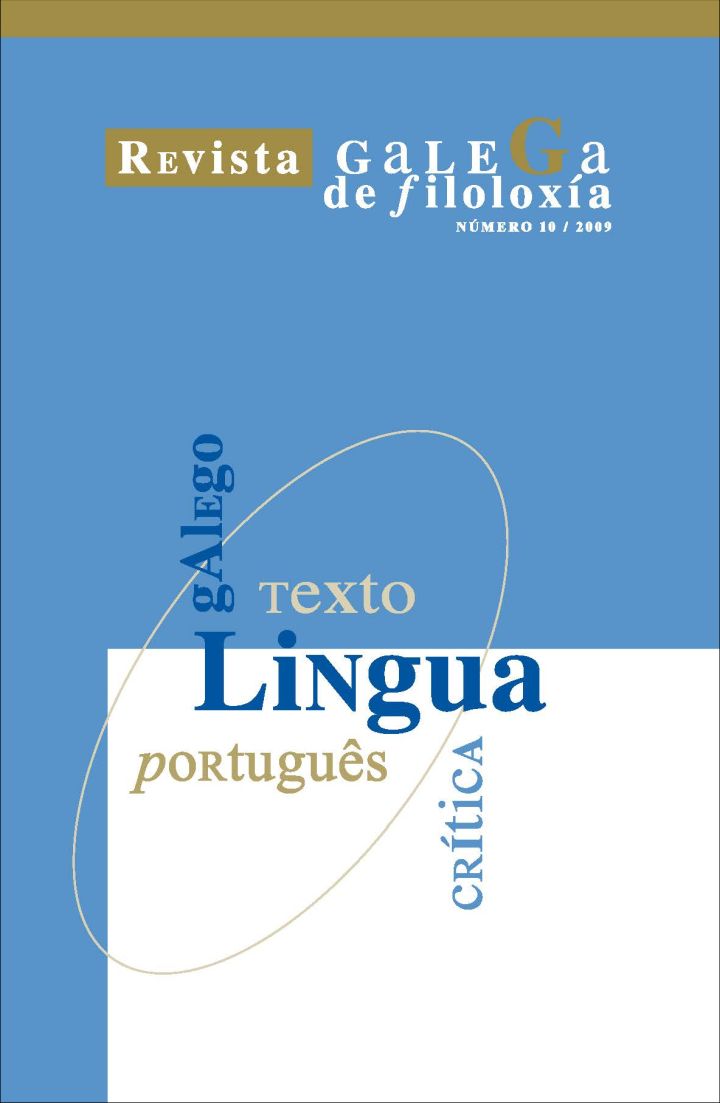Influence of Dominant Languages in the Development of Non-sexist Language Policies for Subordinate Languages: Analysis of the Welsh Case
Main Article Content
Abstract
Based on an analysis of the case of the proposals for the official non-sexist language policy for Welsh, on the one hand, this paper explores to what extent strategic decisions regarding the implementation of non-androcentric are affected by the subordinated status of such languages, whilst at the same time discussing the possible implications of mechanically importing strategies previously drawn up for the dominant language, especially in cases where there is a significant discrepancy between the way either language (in this case Welsh and English) linguistically encode the ‘biological’ gender of human referents. The article goes on to compare the possible repercussions caused by the application of three the main of strategies, labelled ‘neutralisation’, ‘explicitation’ and ‘radical/disruptive’. Whilst recognising that not all subordinated languages share the same characteristics and framework, the paper concludes that non-androcentric language reform ventures are not incompatible with the conservation of endangered languages, making it not only possible but necessary to integrate them into the wider language planning framework.
Keywords:
Downloads
Metrics
Article Details
References
Awbery, G. (2001): Women. Men. Different. Equal. A Standard Glossary of Welsh Terms in the Field of Equal Opportunity. Report to the Equal Opportunities Commission in Wales. / Menywod. Dynion. Gwahanol. Cydradd. Rhestr o Dermau Safonol Cymraeg ym maes Cyfle Cyfartal. Adroddiad I’r Comisiwn Cyfle Cyfartal yng Nghymru (Cardiff/Caerdydd: Equal Opportunities Commission / Comisiwn Cyfle Cyfartal).
Awbery, G. / Jones, K. / Morris, D. (2002): “The politics of language and gender in Wales’”, en Bußman, H. / Hellinger, M. (eds.), Gender across language. Vol. 2: 313-330 (Amsterdam / Philadelphia: John Benjamins).
Baxter, R. N. (2006): “Falocentrismo e heteronormatividade na tradución: de como varren as mulleres e as lesbianas da historia cun golpe de penæ”, Revista Galega de Filoloxía, 7: 11-28.
Bußman, H. / Hellinger, M. (2003): “Engendering female visibility in German”, en Bußman, H. / Hellinger, M. (eds.), Gender across language. Vol. 3: 141-174 (Amsterdam / Philadelphia: John Benjamins).
Bull, T. / Swan, T. (2002): “The representation of gender in Norwegian”, en Bußman, H. / Hellinger, M. (eds.), Gender across language. Vol. 2: 219-249 (Amsterdam / Philadelphia: John Benjamins).
Bourdieu, P. (1991): Language and Symbolic Power (Cambridge, EUA: Harvard University Press).
Bußman, H. / Hellinger, M. (eds.) (2001-2003), Gender across language. 3 vols. (Amsterdam / Philadelphia: John Benjamins).
Bwrdd yr Iaith Gymraeg (s.d.): Teitlau Swyddi Dwyieithog / Bilingual Job Titles (Caerdydd / Cardiff: Bwrdd yr Iaith Gymraeg / The Welsh Language Board).
Cameron, D. (1995): Verbal Hygiene (Londres / Nova Iorque: Routledge).
Cameron, D. (1998): “Lost in Translation: Non-sexist Language”, en Cameron, D. (ed.), The Feminist Critique of Language: 155-163 (Londres / Nova Iorque: Routledge).
Corbett, G. (1991): Gender (Cambridge: Cambridge University Press).
HMSO (1975): Sex Discrimination Act (Londres: The Stationery Office). http://www.legislation.hmso.gov.uk/si/si2003/20031657.htm
Doyle, M. (1995): The A-Z of Non-Sexist Language (Londres: The Women’s Press).
Echeverria, B. (2003): “Language Ideologies And Practices In (En)Gendering The Basque Nation”, Language In Society, 32: 383-413 (Cambridge: Cambridge University Press).
Engelberg, M. (2001): “The Communication of Gender in Finnish”, en Bußman, H. / Hellinger, M. (eds.), Gender across language. Vol. 2 (Amsterdam / Philadelphia: John Benjamins).
Harris, Z. (1968): “Mathematical structures of language” (Nova Iorque: Interscience Publishers).
Hirschman, L. / Sager, N. (1982): “Automatic information formatting of a medical sublanguage’, en Kittredge, R. / Lehrberger, J. (eds.), Sublanguage; studies of language in restricted semantic domains: 27-80 (Berlín / Nova Iorque: W. de Gruyter).
Institut Balear de la Dona (2001): Llenguatge no sexista. La comunicació: un recurs per a la igualtat (Palma de Mallorca: Govern de les Illes Balears).
King, G. (1993): Modern Welsh: A Comprehensive Grammar (Londres / Nova Iorque: Routledge).
Labov, W. (1966): “Hypercorrection by the lower middle class as a factor in linguistic change”, en Bright, W. (ed.), Sociolinguistics: 84-113 (A Haia: Mouton).
Labov, W. (1972): Sociolinguistic Patterns (Philadelphia: University of Pennsylvania Press).
MacLeod, M. (2003): “Ochone! The curse of political correctness hits Gaelic language”, (ed.), Scotland on Sunday (13.07.03) http://scotlandonsunday.scotsman.com/scotland.cfm?id=762452003
McNeir, C. L. (ed.): Faclair na Pàrlamaid / Dictionary of Terms (Dùn Èideann / Edimburgo: Pàrlamaid na h-Alba / The Scottish Parliament).
Morales Moreno, A. (2008): “Aspectes estilístics en la redacció de textos administratius: anàlisi comparativa dels estatuts d’Autonomia de Catalunya de 1979 i de 2006”, Revista de llengua i dret, 49: 27-44.
Moreno, M. (2008): El sueño de Eva (Sevilla: rd editores).
Moure, T. (2008): O natural é político (Vigo: Xerais).
Oroz, A. (s.d.): “Sexo, genética y género”, Soca, R. (resp.) (10.06.04), La página del idioma español (elcastellano.org) http://www.elcastellano.org/nosex.html.
Pauwels, A. (1998): Women Changing Language (Londres / Nova Iorque: Longman).
Pokorny, J. (1959): Indogermanisches Etymologisches Wörterbuch (Berlín e Munich: Francke Verlag).
Rodríguez Rodríguez, A. / Davila Ventura, M. (redac.) (2003): Lingua galega. Criterios lingüísticos (Vigo: Universidade de Vigo).
Romaine, S. (1999): Communicating Gender (Mahwah / Londres: Lawrence Erlbaum).
Spender, D. (1980): Man made Language (Londres: Pandora Press).



